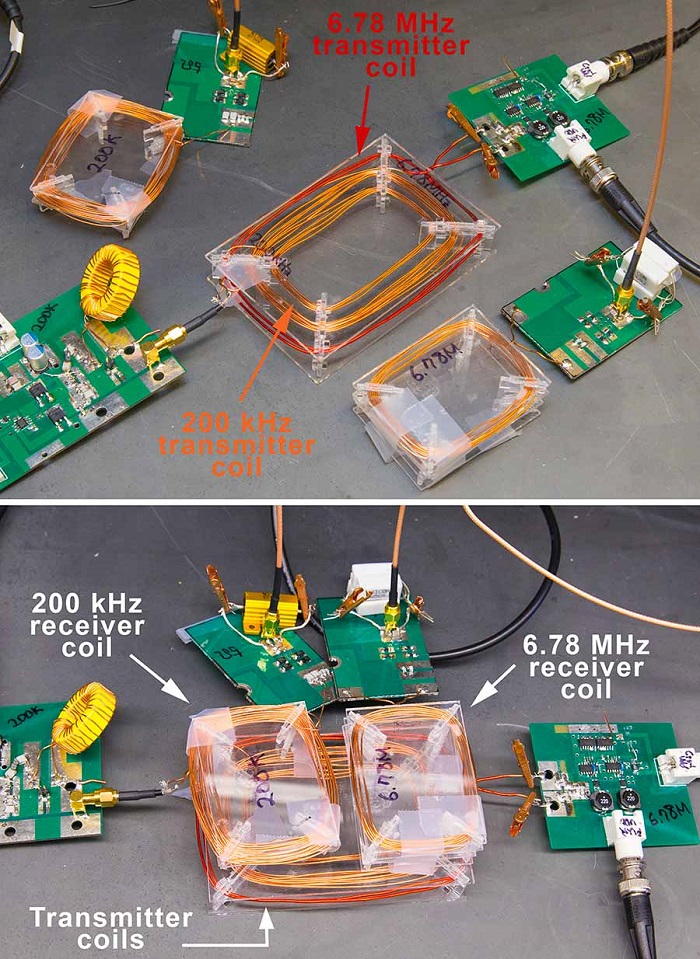Electrical engineers at the University of California (San Diego) have developed a dual-frequency wireless charger that’s compatible with various consumer electronics from different brands.
It is believed to be the first powering station of its type.
“To our knowledge, this is the only multi-standard wireless power transmitter that's been shown to operate simultaneously at two different frequencies with high efficiency,” said Patrick Mercier, a professor in the Department of Electrical and Computer Engineering at UC San Diego who led the study published in the journal IEEE Transactions on Power Electronics.
What’s interesting about this platform is not the fact that it can deliver power to multiple devices simultaneously; rather, the fact that it has seemingly solved the issue of incompatibility between the three competing wireless standards in today’s market: Qi, Powermat, and Rezence.
The three standards operate under different frequencies. Qi and Powermat operate around 200 kHz while Rezence operates at 6.78 MHz. So, in order for a single charging device to truly be universal, it needs to operate across all of these different frequencies.
From the wireless charger standpoint, its ability to operate at a particular frequency depends on its transmitter coil; that is, being able to charge wirelessly requires the charger’s transmitter coil to send a high-power signal out to a compatible receiver coil in the device. Existing chargers are generally built with a transmitter coil optimized to work with one frequency; the consequence of this that the chargers are then extremely inefficient, or otherwise incompatible, with other frequencies.
To overcome this hurdle, Mercier and his team built a charging platform that basically operates across the frequencies supported by all three wireless power standards. The prototype is a thin, rectangular box (12.5 centimeters x 8.9 centimeters) that contains within it two transmitter coils: an inner coil optimized to operate at a frequency of 200 kHz, and an outer coil optimized to operate at 6.78MHz. In terms of the design, one of the features worth pointing out is that the coils lie in the same plane so as to allow for a compact size. The platform itself is just big enough to lay two smartphones next to one another.
 The prototype of the dual frequency charger is a thin, rectangular box that contains two transmitter coils: an inner coil optimized to operate at a frequency of 200 kHz (orange), and an outer coil optimized to operate at 6.78 MHz (red). The prototype setup is pictured with the two receiver coils off the charging platform (top) and side by side on the platform (bottom). The transmitter coils and receiver coils are attached to green circuit boards.
The prototype of the dual frequency charger is a thin, rectangular box that contains two transmitter coils: an inner coil optimized to operate at a frequency of 200 kHz (orange), and an outer coil optimized to operate at 6.78 MHz (red). The prototype setup is pictured with the two receiver coils off the charging platform (top) and side by side on the platform (bottom). The transmitter coils and receiver coils are attached to green circuit boards.
Another feature worth pointing out: a filtering circuit prevents the coils from interacting with one another. This is important because should such interaction occur, it will cause efficiency losses.
In terms of tests, the researchers demonstrated their charging platform was able to deliver power to both receiver coils at the same time at efficiencies ranging from 70 to 80%. The receiver coils were also able to receive power regardless of where they were placed on the actual charging platform.
“This means that multi-device and multi-standard wireless charging don't have to come at a significant efficiency penalty,” said Mercier.
The team has since filed various patents on the technology. Looking ahead, they are seeking commercial partners to help bring the universal wireless charge to the consumer market.
Read the full study: “Wireless Power Transfer with Concurrent 200 kHz and 6.78 MHz operation in a Single Transmitter Device”.
Advertisement
Learn more about Electronic Products Magazine





